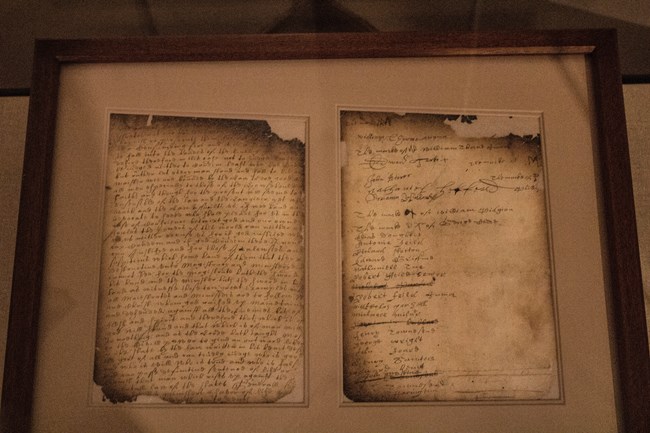Last updated: October 3, 2018
Article
Document that inspired Bill of Rights on display at Federal Hall National Memorial

NPS PHOTO
In 1645, the settlement of Vlissengen (known today as Flushing, Queens) became part of New Netherland. Largely settled by English families, Vlissengen proved to be fertile ground for Quakers who were persecuted at home in England. Quaker religious teachings spread throughout Vlissengen and Long Island, threatening the dominance of the Dutch Reformed Church in New Netherland. Consequently, Peter Stuyvesant, the governor of New Netherland, forbade colonists from allowing Quaker meetings to be held in any home.
A Flushing colonist held a Quaker meeting in his home, and he was fined and banished. Flushing citizens protested, and in 1657 they wrote a demand for religious freedom that is today known as the Flushing Remonstrance. Today, the Flushing Remonstrance is regarded as the precursor to the U.S. Constitution’s provision on freedom of religion on the Bill of Rights.
On Monday, the original 361-year-old document left FEHA in the same style as it arrived with three preservation experts from the New York State Archives in Albany arriving to remove the historical document for its return to the New York State Archives in Albany.
Preservation experts left a replica of the historical document that will remain on display at FEHA until September 2018.
